Sailfish and swordfish are two of the top dogs of the big-game fishing world. These are some of the fastest, biggest, and hardest-fighting saltwater species that can be caught with a rod and reel. And while both fish should be on every serious angler’s bucket list, there are some things to consider when comparing sailfish vs. swordfish.
While the two billfish species do have a lot in common, sailfish and swordfish also differ from one another in several ways. Aside from their physical attributes, they prefer different water types. They also have their own migration habits and unique fighting styles. From an angling perspective, this means that each species calls for different strategies.
In this article, we look at sailfish and swordfish through the following lenses:
- Their physical appearance, including their shape, size, and main attributes
- Their distribution in the world’s oceans and the habitats they prefer
- Their behavior and hunting styles
- How to catch them
- Harvesting and cooking vs. catching and releasing
Appearance

Sailfish and swordfish are built to travel vast distances while chasing down fast-moving prey and escaping sharks. They are lean, mean swimming machines with muscular bodies and powerful, deeply forked tail fins. They’re also easy to tell apart if you focus on a few key characteristics:
- Swordfish are much larger with longer, sword-like bills
- Sailfish have vertical stripes and a wide, retractable dorsal fin (that looks like a sail)
- Swordfish are generally found in deep water far offshore, while sailfish can be found in shallower water closer to shore
Size
Swordfish grow much larger than sailfish. These giants of the deep can weigh over 1,000 pounds. The IGFA all-tackle world record, caught in Chile, weighed 1,182 pounds. As with sailfish, swordfish reach larger sizes in the Pacific than they do in the Atlantic.
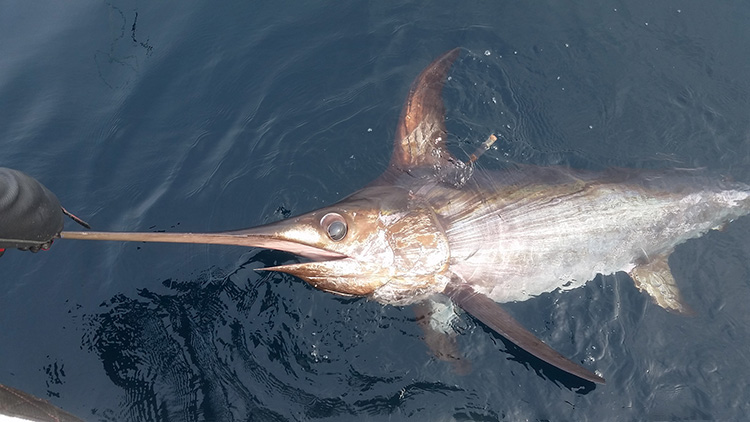
A typical sailfish averages 5 to 11 feet long (including the bill). The biggest Atlantic sailfish ever caught weighed around 142 pounds, while the all-tackle world record for Pacific sailfish weighed 221 pounds and was caught off the coast of Ecuador.
Bills
The name “swordfish” derives from their sword-like bill, which is smooth, broad, and flat with a sharp tip. Swordfish have the longest bills in the billfish family. They’re between one-third and one-half of their total body length.
Sailfish have more rounded bills that are shaped more like a spear than a sword. Their bills are shorter than a swordfish’s and just under a third of their total body length.
Fins
While swordfish are named for their bills, sailfish are named for their characteristically large dorsal fins, which fan out and run almost the entire length of their backs. They can retract and expand these “sails”, which gives them an incredible ability to maneuver at high speeds.
Swordfish have slim, crescent-shaped dorsal fins that run a short distance behind their gill plates. These fins are rigid and never change shape.
Eyes
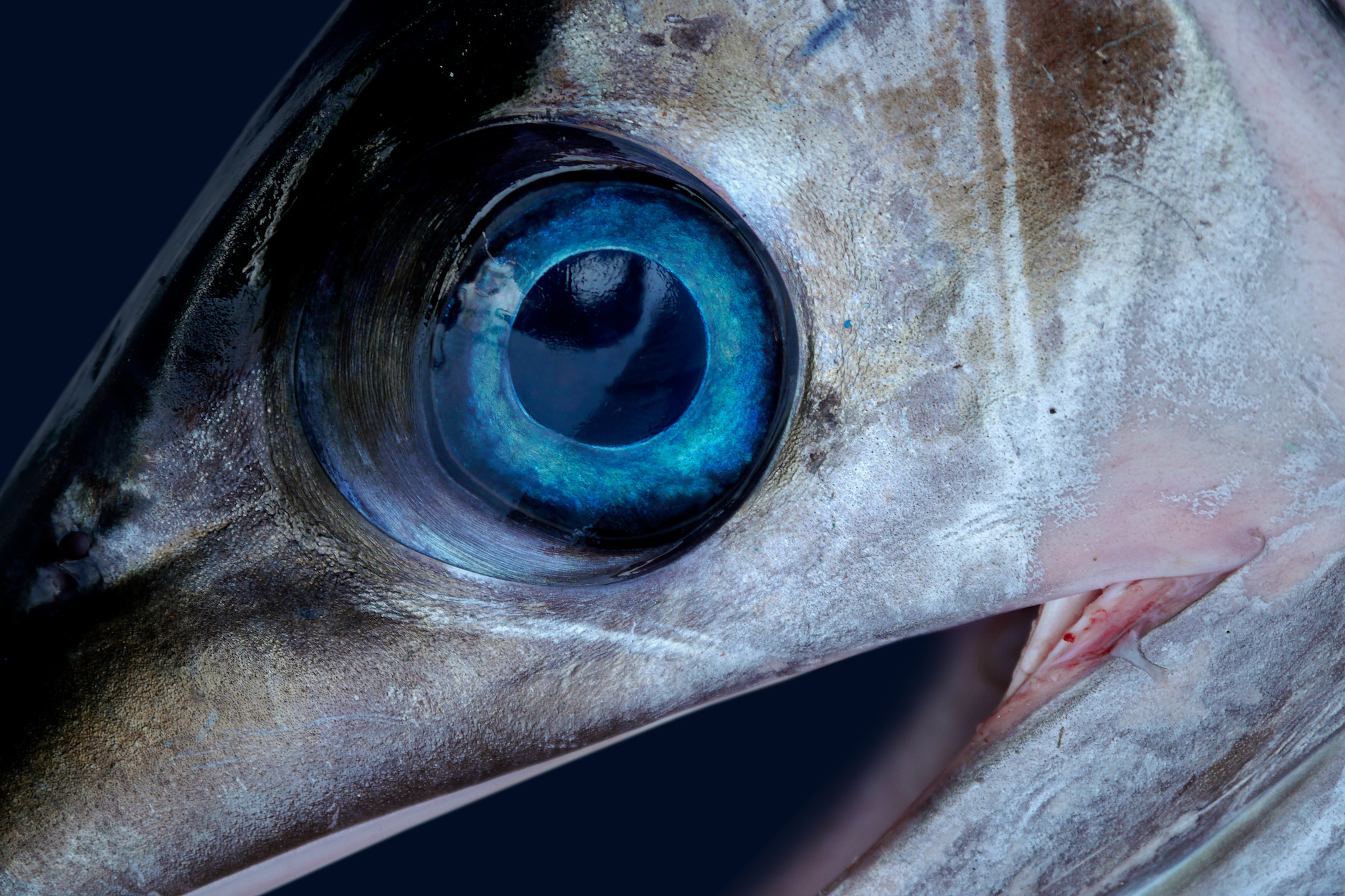
Swordfish have giant eyeballs that are noticeably larger than those of a sailfish. These larger orbs let in more light, allowing swordfish to hunt in deeper, darker waters.
Coloration and Body Type
Visually speaking, sailfish are stunners. They’re typically blue-gray in color with whitish underbellies and vertical stripes. But when they get excited or agitated, sailfish “light up”, turning their bodies a bright, iridescent blue with golden and purple tones and yellow stripes.
Swordfish have deep brown or black backs that transition to silvery-white bellies. Their colors are somewhat drab compared to sailfish, with a subtler iridescence and purple hues.
Both species have long, tapered bodies, but swordfish have a more cylindrical shape than sailfish. Swordfish also have leathery skin that is very different from the typical scales found on most fish.
Distribution and Habitat
Swordfish and sailfish are both pelagic species, which means they swim throughout the water column but rarely touch the bottom as they hunt for prey in the ocean. They’re also migratory and travel long distances each year, swimming up and down the coasts following food sources. The two species are native to the Atlantic, Pacific, and Indian Oceans, and NOAA Fisheries recognizes four main subspecies: Atlantic and Pacific sailfish, along with North Atlantic and North Pacific swordfish.
While these expert hunters inhabit the same oceans, sails and swords tend to hang out in different water types. Sailfish typically prefer warmer water closer to the surface, while swordfish can be found in much deeper, colder waters closer to the ocean floor.
Behavior and Hunting Styles
Sails and swords are both predatory fish that hunt baitfish, squid, and smaller game fish. They use their bills (also known as “rostrums”) to slash, stab, stun, and impale their prey. The two fish have very different hunting styles, however.
Sailfish are the fastest fish in the ocean, and they can swim up to 68 miles an hour. They rely on their speed to chase down smaller fish like sardines and mackerel. With their dorsal fins folded against their back, sailfish can dash through the open ocean at top speed. Then, by folding out their giant dorsal fin, they can use it like a rudder to make sudden turns or throw on the brakes.
As pack hunters, sailfish also use their dorsal fin when hunting in groups. One or more of them will use their sail to “herd” baitfish into balls and push them near the surface, while another blasts through the bait ball spearing and slashing at fish. (More often than not, they stun baitfish rather than impale them, knocking them senseless with their bill and then swallowing them whole.)
Swordfish typically hunt alone. They’ll eat baitfish, but some of their favorite prey items are cephalopods—namely squid and octopus. They do most of their hunting at night. Like sailfish, swordfish use their bills to stun prey.
How to Catch Them
Captain Jimmy David runs L&H Sportfishing out of Key Biscayne, Florida, which is just south of Miami. His location allows him to chase both sailfish and swordfish year-round, but since the two species are migratory, he says some months are better than others.
“We’ve caught swordfish every month of the year, but fall seems to be the best time,” David tells Outdoor Life.
The sailfishing in South Florida typically peaks during the winter and spring (November through March). This is when they’re migrating north to south along the coast.

“It can be exciting fishing. We always look forward to it, and there’s usually some good action when they’re around.”
David spends more of his time fishing for sails, which isn’t too surprising. They’re the official state saltwater fish of Florida, after all. But there’s another big reason why clients tend to book more trips for sailfish vs. swordfish: sails provide some of the most exciting and action-packed fishing there is.
Fishing for Sailfish
“The majority of the time we chase sailfish because they’re close to shore,” says David, who caught his first sailfish when he was six years old. “We do get a lot of swordfish charters, too, but they’re further off. And the majority of the time, you gotta target one or the other.”
Fishing for sailfish off Key Biscayne typically involves a run of only three miles or so from the coast, where the sails congregate just outside the edge of reefs.
Once he reaches an area with sailfish, David uses two main strategies. The first (and his favorite) is pure sight fishing, which involves him driving around in the tuna tower looking for sailfish. When he spots one, he’ll maneuver the boat into position and have his mates or anglers cast to the fish with light spinning rods. Because they tend to hunt in groups near the surface, he says this can be a reliable way to find sailfish.
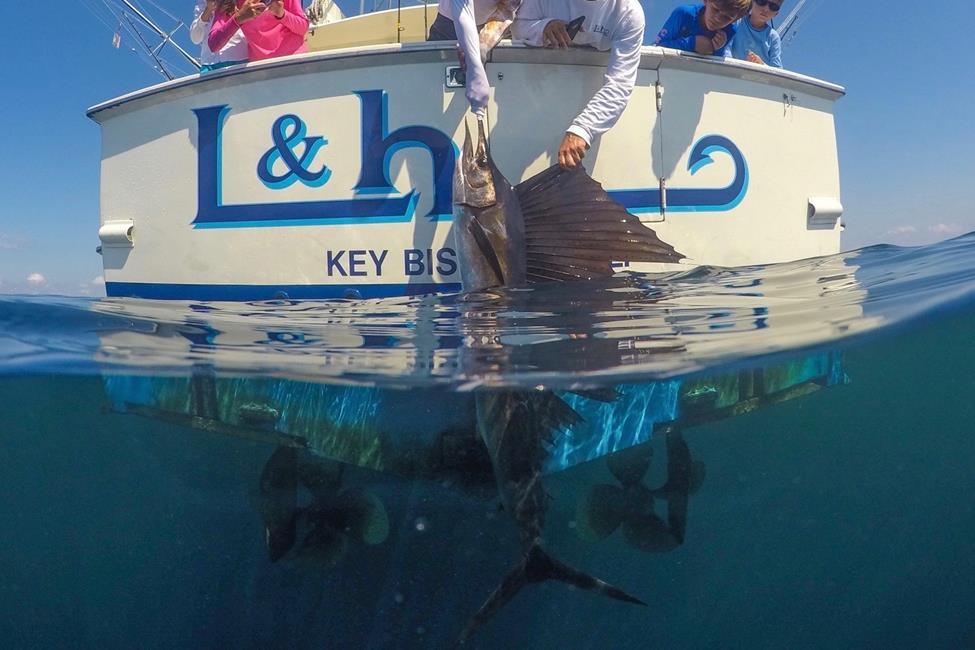
“Usually you’ll see the actual fish on the surface, and it’s very fun and effective,” David says. “All our best big number days have been like that. The best we ever did was 41 sailfish in one day—which is a record for the most ever caught by a charter boat [in a day] out of Miami.”
The other technique, known as kite fishing, uses a square kite to carry a baited line behind and away from the boat. By clipping his lines to the kite, David can keep his baits up near the surface where the sailfish are feeding.
“We usually deploy two kites with three live baits on each,” he explains. “That’s the most effective way to catch sails in our area when we’re not seeing them.”
Once a sailfish is hooked, the fun really begins. These fish go bonkers, jumping out of the water and burning drag as they run near the surface. This makes for an exciting fight, David says. It also makes them much easier to land quickly.
Read Next: Woman Speared by Sailfish During Florida Fishing Trip
“Sailfish will usually do a lot of jumping, and they tend to fight more on the surface, which is better for the fish,” he explains. “You can drive the boat to the fish, get ‘em up quicker, and get a clean release without causing a lot of stress on the fish.”
Fishing for Swordfish
Targeting swordfish is more of a grind, David says, with more time spent waiting and less opportunities to hook up. It also requires significantly more running time and fuel, as he typically goes at least 20 miles offshore to reach productive fishing grounds. (Which he says is relatively close compared to other places around the world where swordfish frequent.)
“With swordfish, there are a lot more days where you strike out,” David says. “Weather also plays a big factor. They’re way out in the Gulf Stream so you need nice weather and calmer seas to reach them.”
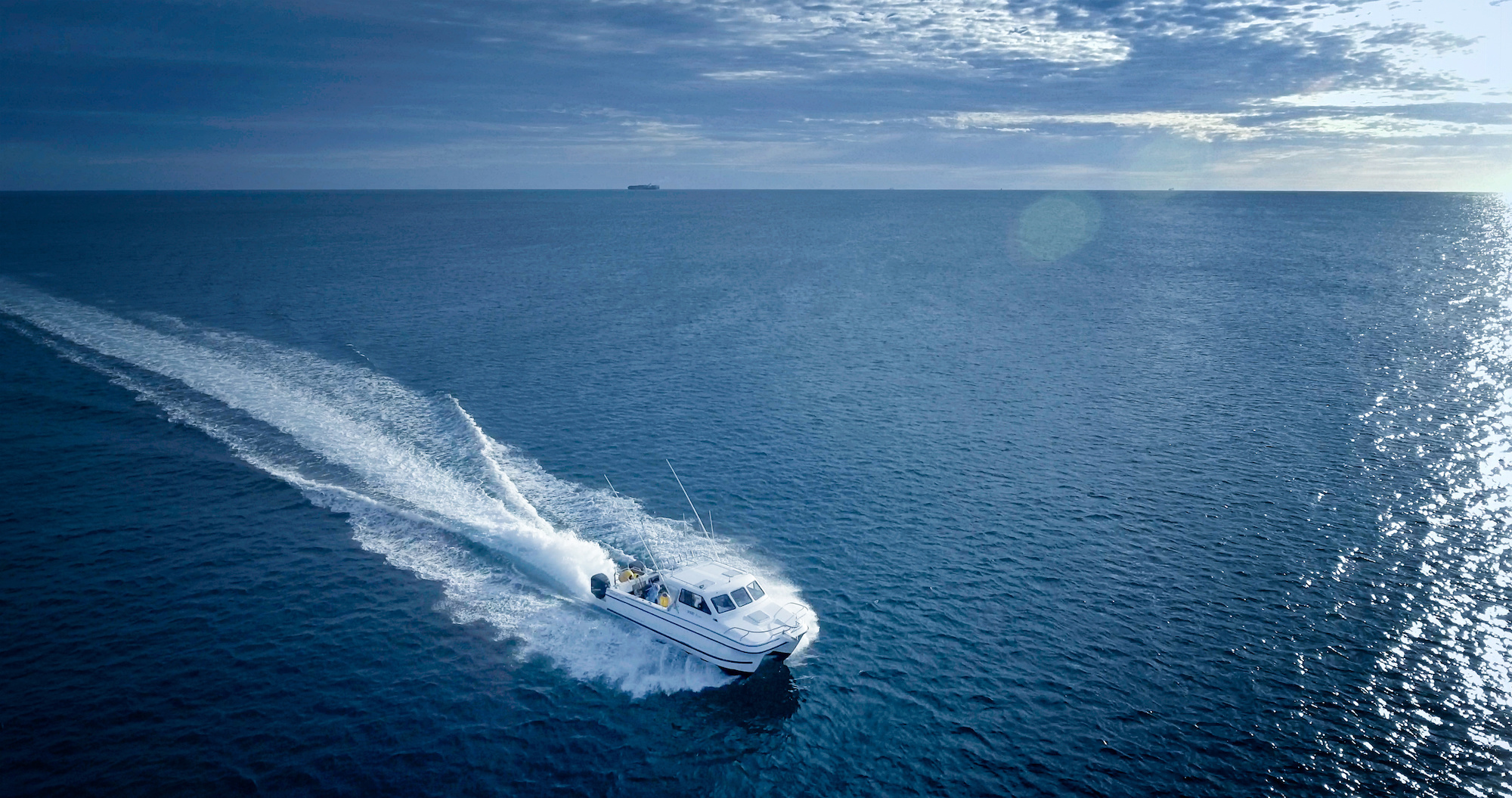
Because swords are nocturnal hunters, anglers used to think of swordfishing as strictly a nighttime proposition. But David fishes for them during the daytime just as often, and he says his success rates tend to go up during the day.
Getting a bite from a swordfish usually involves drifting dead baits, which are dropped hundreds of feet deep, and waiting for long periods of time. For swordfish baits, David likes bonita strips, dolphin bellies, and whole squid, along with the occasional live goggleye or blue runner.
Read Next: Fisherman Sight-Casts to Land a Swordfish on the Fly. That’s Almost Unheard Of
Battling a swordfish is also very different from reeling in a sailfish. Swords are incredibly strong and they’re usually hooked in deep water, where they like to do most of their fighting.
“They call them ‘gladiators’ and they’re one of the strongest fighting fish out there,” David says. “They like to stay down, and a lot of the bigger ones, they’ll fight to the death until they have nothing left.”
Harvest and Cook vs. Catch and Release
The other major difference between fishing for swordfish vs. sailfish is that swordfishing is more harvest-based, while sailfishing is mostly a catch-and-release game. This is partly because so many swordfish die before they’re landed, but it’s also because they make such phenomenal table fare.

“Swordfish have a minimum size limit, and if they reach that size, we’ll harvest them most of the time. They have great food value, and a lot of the time that’s what the customers are after.”
Sailfish meat, on the other hand, isn’t nearly as good. And the majority of anglers who want to chase sails are doing so strictly for the excitement. They love the visual aspect of sightfishing and the thrill that comes with being hooked up to the fastest fish in the world.
“I’d say 99 percent of the sailfish we catch are released,” David says. “Occasionally, if we have one come up dead and it’s legal size we’ll bring it home. But they’re not nearly as good table fare. You can grill it or fry it, but if we do keep one we’ll usually just have the meat smoked.”
Sailfish vs. Swordfish FAQs
Q: Do you need a big boat to chase sailfish and swordfish?
Not necessarily. Most people chasing billfish run big, twin-engine boats that can run a far distance offshore. This is more important when targeting swordfish, which are typically found in deeper water further from the coast. Sailfish can be found closer to shore in shallower water, and a lot of anglers catch them from kayaks on a regular basis.
Q: Can you eat sailfish?
Yes, you can eat sailfish, but they’re not the best-tasting fish in the billfish family. And while they’re kept and eaten in many places around the world, most anglers in North America view sailfish as an important gamefish that should be released whenever possible.
Q: Are swordfish good to eat?
Swordfish have firm, white meat that’s on the milder side and makes for excellent table fare. If you haven’t had a grilled swordfish steak before, you’re missing out on one of the best tasting fish in the ocean. As with other large, predatory fish, high mercury levels are a concern when eating large amounts of swordfish.
Q: How to identify a sailfish?
Look for the wide, sail-like dorsal fin running down the fish’s back. Also look for a rounded bill that’s shaped more like a spear.
Q: How to identify a swordfish?
Look for a thin, crescent-shaped dorsal fin, long sword-like bill, and extra-large eyeballs.
Final Thoughts on Sailfish vs Swordfish
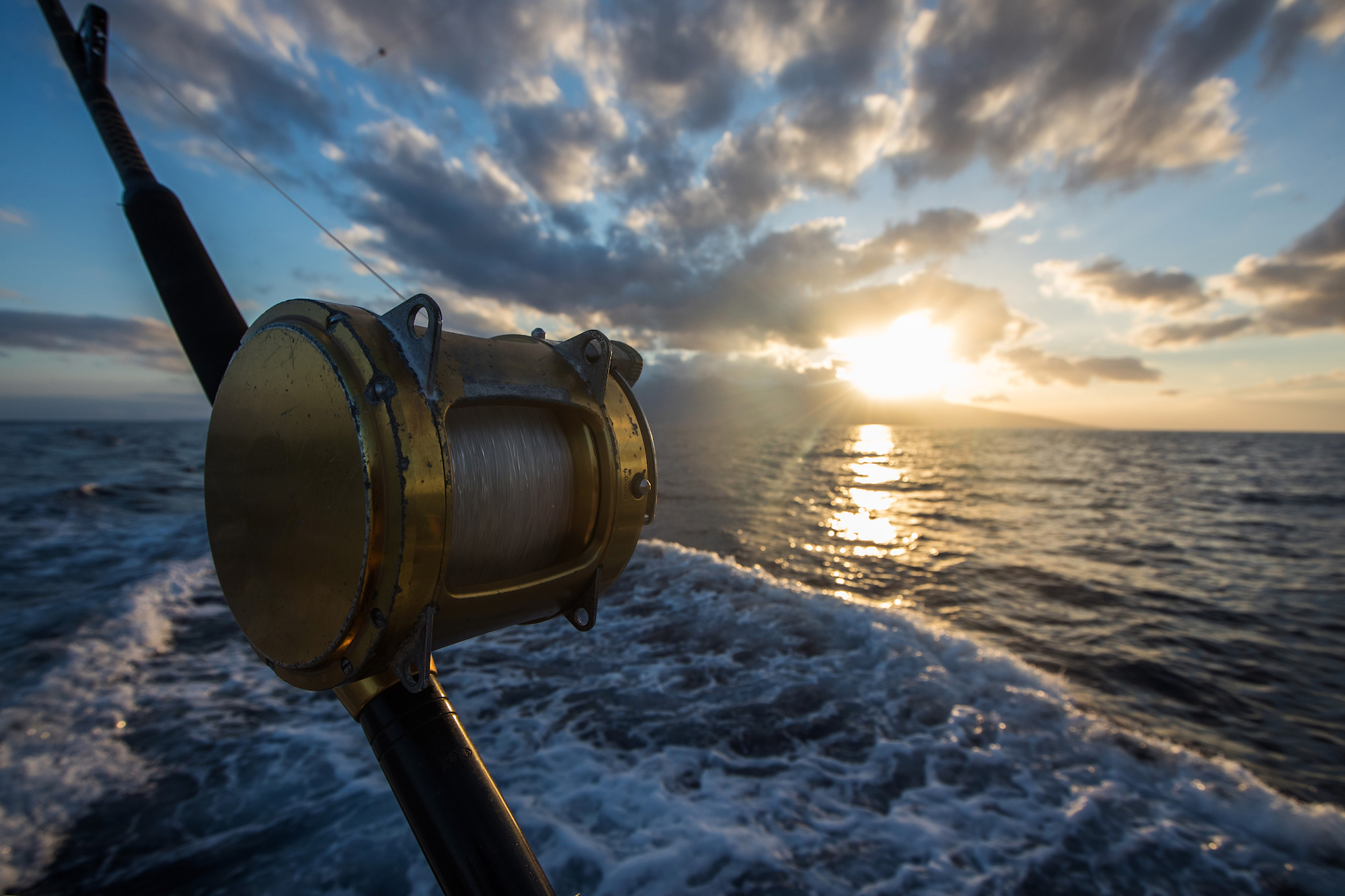
One of the best parts about fishing for sailfish vs. swordfish is that if you go to the right place and fish for long enough, you can have shots at both. A lot of anglers will tell you the best sailfishing in the world is found in Panama, and most of the world-record swordfish have come from South America and New Zealand. But during the right time of year, North American anglers can fish closer to home and still have opportunities to catch both species.
“The sails, they migrate past our area every year,” Capt. David says. “The swordfish are farther out, but not as far as most other places. So, you can catch sails on a half-day trip and then have a good shot at swordfish on a full day. Plus, you really never can tell. This year we caught a swordfish on a kite while fishing for sailfish just three miles from the cut. And we’ve caught sailfish when targeting swords, too.”






![Air gun 101: The differences between .177 & .22 – Which jobs they do best ? [Infographic]](https://airgunmaniac.com/wp-content/uploads/2020/09/g44-218x150.jpg)



































